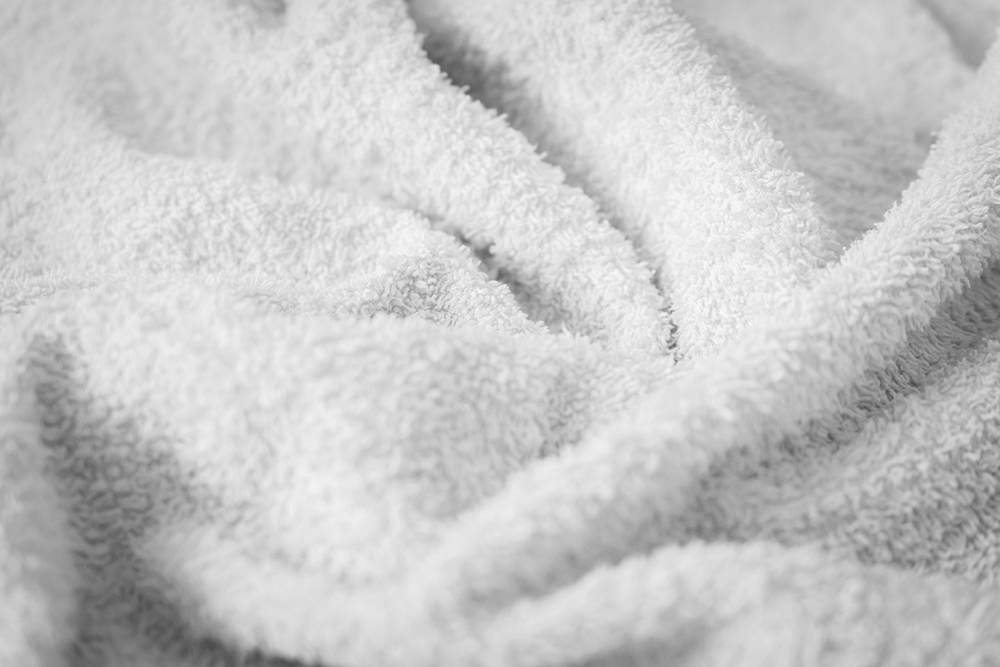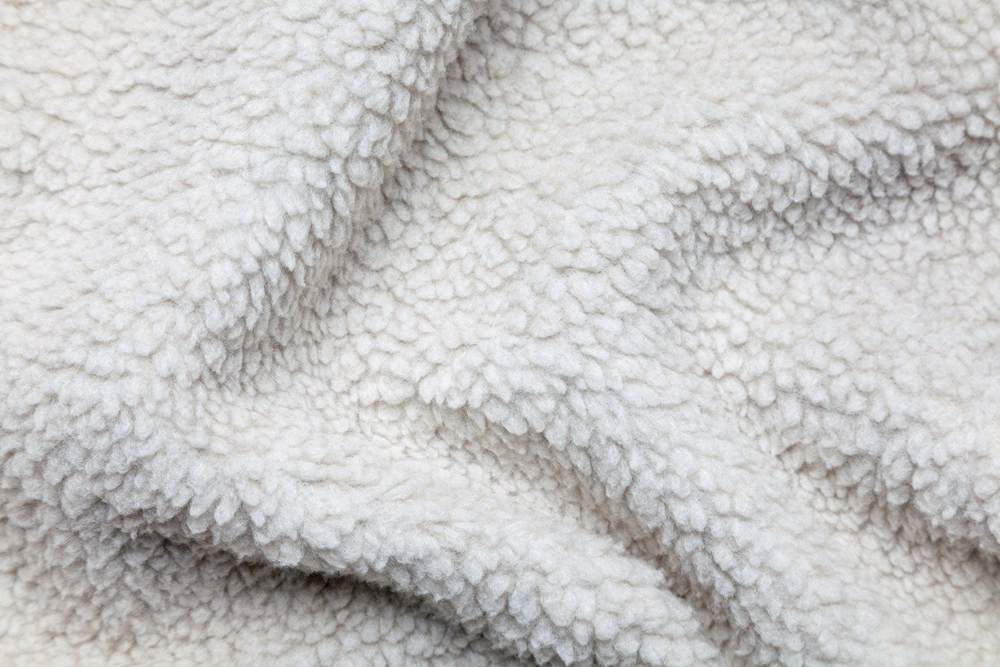
French terry and fleece are two popular fabrics that are often used to make comfortable loungewear and athletic apparel. But what exactly is the difference between these two fabrics?
In this complete guide, we’ll explain everything you need to know about French terry and fleece fabrics, including:
- What is French Terry Fabric?
- What is Fleece Fabric?
- French Terry vs Fleece: Key Differences
- French Terry vs Fleece for Loungewear and Athleisure
- Caring for French Terry and Fleece Fabrics
- French Terry vs Fleece: Which is Better?
- Frequently Asked Questions
Let’s dive in!
Table of Contents
What is French Terry Fabric?

French terry is a knit fabric that has a smooth flat face and a looped pile back. It consists of uncut loops on one side and cut yarn tips on the other side.
The loops give French terry its soft, plush feel and ability to absorb moisture. The cut yarn tips create a flat, smooth surface on the other side.
French terry is created on a circular knitting machine that knits the face and back of the fabric simultaneously. It can be made from cotton, polyester, rayon, wool, and blends.
Properties of French Terry Fabric
Here are some key properties of French terry fabric:
- Soft and plush – The looped pile back has a soft, plush handfeel. The loops are absorbent and help wick away moisture.
- Smooth face – The cut yarn tips create a flat, smooth surface on the front side. This makes it easy to print or embroider designs.
- Stretchy – French terry contains a small amount of spandex, giving it stretch and recovery. This makes it comfortable to wear.
- Breathable – The loops allow air circulation, making French terry more breathable than fleece.
- Durable – French terry is quite durable due to the knitted construction. It resists pilling, fading, and shrinkage.
- Casual look – French terry has a casual, laidback aesthetic. It’s ideal for loungewear and athleisure.
Uses of French Terry Fabric
Here are some of the common uses for French terry fabric:
- Loungewear – French terry is ideal for making comfy sweatpants, hoodies, robes, and other loungewear. Brands like Champion and Reigning Champ use French terry.
- Athleisurewear – Leggings, joggers, shorts, and athletic tops are often made from French terry. It’s breathable and stretchy.
- Pajamas – French terry pajama sets and nightshirts are soft and insulating for sleeping.
- Bathrobes – Plush French terry robes are very absorbent after bathing. They have an inside-out texture.
- Polo shirts – The smooth face of French terry can be used to make casual polo-style shirts.
- Towels – Some towels and bathmats feature French terry’s absorbent looped pile.
- Blankets – Cozy French terry throw blankets have a soft nap and don’t wrinkle easily.
So in summary, French terry is ideal for casual basics and athleisure apparel where softness, stretch, and moisture absorption are desirable qualities.
What is Fleece Fabric?

Fleece is a soft synthetic pile fabric that is designed to mimic wool fleece. It consists of a pile of fuzzy yarn tips that create a warm, plush fabric.
Modern fleece is made from polyethylene terephthalate (PET) or other synthetic fibers. The fibers are packed densely and brushed to achieve the fluffy texture.
Fleece can vary from light to mid to heavyweight. Heavier fleece is thicker and more insulating for outerwear and blankets. Lighter fleece works for shirts and loungewear.
Properties of Fleece Fabric
Here are some key characteristics of fleece fabric:
- Soft and plush – Fleece has a soft, fuzzy, velvety feel. The pile surface traps air for warmth.
- Lightweight – Fleece is a lightweight fabric that adds warmth without weight. It’s breathable enough for easy layering.
- Wicks moisture – Fleece wicks moisture effectively to keep skin dry. It doesn’t absorb much water.
- Dries quickly – Fleece fabric dries rapidly if it gets wet. The moisture passes through the synthetic fibers.
- Stretchy – Fleece has some natural stretch and recovery thanks to the knitted construction.
- Durable – Fleece is a strong fabric that resists pilling, wrinkling, shrinking and fading. It maintains its pile through many uses.
- Insulating – The fluffy pile traps air and provides excellent insulation against the cold. Heavier fleece is very warm.
- Wind resistant – Dense fleece fabric can block wind penetration for added warmth.
Uses for Fleece Fabric
Here are some of the main uses for fleece fabric today:
- Outerwear – Fleece jackets, vests, pullovers and other cold weather gear. Patagonia popularized fleece jackets in the 1980s.
- Blankets & throws – Lightweight fleece blankets provide warmth without weight. They are soft and insulating.
- Loungewear – Fleece sweatpants, hoodies and tops are incredibly soft and comfortable.
- Base layers – Many hiking and skiing base layer sets are made from moisture-wicking fleece.
- Athletic wear – Fleece pants, hoodies and shorts are worn for training and sports.
- Socks and accessories – Cozy fleece socks, beanies, gloves and scarves.
- Pajamas – Children’s pajamas are often made with soft snuggly fleece material.
So in summary, fleece is the ultimate soft and warm fabric for cold weather apparel, blankets, and loungewear.
French Terry vs Fleece: Key Differences
Now that we’ve covered the characteristics of French terry and fleece separately, let’s compare the two fabrics head-to-head:
| Comparison | French Terry | Fleece |
|---|---|---|
| Fabric construction | Knitted | Knitted |
| Weave | Looped pile back with flat face | Pile surface |
| Materials | Cotton, rayon, polyester, wool, blends | 100% synthetic – polyester or poly blends |
| Texture | Loops on one side, cut yarns on the other | Fluffy soft pile |
| Thickness | Medium thickness | Varies from light to midweight |
| Warmth | Moderate warmth from the loops | Excellent warmth from pile |
| Breathability | More breathable than fleece | Less breathable than French terry |
| Moisture wicking | Absorbs moisture into the loops | Wicks moisture away from skin |
| Drying time | Longer drying time | Dries very fast |
| Elasticity | High stretch and recovery | Moderate stretch |
| Drape | Flowy drape | No drape, more structure |
| Care | Machine wash cold, tumble dry low | Machine wash cold, tumble dry low |
| Price | $$ $ | $$ |
| Uses | Loungewear, athleisure, robes, pants | Outerwear, blankets, base layers |
As you can see in the comparison, French terry and fleece share some similar properties like softness, stretch, and care requirements.
But they differ significantly in their fabric construction, breathability, drying time, drape, and best uses. French terry excels at casualwear and athletic gear while fleece is the ultimate insulation fabric.
Next we’ll explore how to choose between the two fabrics for loungewear and athleisure apparel.
French Terry vs Fleece for Loungewear and Athleisure
Both French terry and fleece fabrics are prized for their use in comfortable athleisure apparel and loungewear. But which fabric is better for each application?
Here are some key considerations:
Loungewear
For loungewear like hoodies, sweatpants, robes, and pajamas, French terry is usually preferable to fleece. Here’s why:
- French terry is more breathable, making it more comfortable for lounging and sleeping.
- The absorbent loops draw sweat away from the body better than fleece.
- French terry has flowy drape that moves nicely in loungewear like robes and pants.
- The soft loops feel soothing against bare skin in pajamas and robes.
- French terry hoodies and sweatshirts can be worn year-round, not just for cold weather.
That said, lightweight fleece can also work well for loungewear. It provides warmth and comfort for chillier environments or seasons.
Athleisure Apparel
For athleisure apparel like joggers, tops, shorts and leggings, French terry is again the better choice in most cases:
- French terry is highly breathable during exercise and activity.
- The absorbent loops help wick sweat during workouts.
- French terry has excellent stretch and recovery for full range of motion.
- The smooth face layer allows for easy screen printing of athletic designs.
- French terry maintains shape well through repeated laundering and wear.
Fleece is less ideal for active athleisurewear because it lacks breathability. But fleece can work for outer athleisure layers in cold weather.
So in summary, French terry is the better pick for most loungewear and athleisure apparel. But both fabrics have their advantages depending on the climate and intended use case.
Caring for French Terry and Fleece Fabrics
Caring for French terry and fleece fabrics is quite straightforward. Here are some tips:
Laundering: Both fabrics can be machine washed in cold water and tumble dried on low heat. Use a gentle detergent. Don’t use fabric softener as it can affect the feel.
Drying: Try not to overdry fleece or French terry, as it can cause pilling. Air drying sometimes works best.
Heat: Avoid ironing or drying these fabrics at high heat. Wash with similar colors to prevent lint transfer.
Pilling: Use a fabric shaver to gently remove any pilling on the surface. Don’t rub too hard.
Printed designs: Turn printed French terry items inside out before washing to protect the design.
Stains: Pretreat stains on either fabric before washing. A vinegar solution often helps with odor removal.
Storage: Fold or hang French terry and fleece items to help maintain their shape. Don’t overpack them or compress into tight spaces.
With proper care, both fleece and French terry fabrics will maintain their softness and appearance for many years. Taking a few precautions goes a long way.
French Terry vs Fleece: Which is Better?
So which is better, French terry or fleece fabric? Here’s a quick summary:
For loungewear and athleisure, French terry is usually better because of its breathability, moisture absorption, and drape.
For blankets and cold weather outerwear, fleece is the better choice thanks to its lightweight warmth and insulation.
For versatility year-round, French terry is preferable since it can work for both warm and cool weather.
For budget buyers, fleece typically costs slightly less than quality French terry fabric.
At the end of the day, the best fabric comes down to your specific needs and preferences. And often a combination of both fleece and French terry makes sense depending on the garment or item.
Frequently Asked Questions
Here are answers to some common questions about French terry and fleece fabrics:
Is French terry good for winter wear?
Yes, French terry makes excellent sweats and loungewear for winter. The absorbent loops provide warmth and the breathability prevents overheating. Look for thicker, midweight French terry in winter items.
Is French terry cooler than fleece?
Generally yes. The open construction of French terry makes it more breathable and cooler than dense fleece fabric. Fleece provides more insulation.
Is French terry stretchy?
Yes, French terry contains spandex fibers which give it great stretch and recovery. This makes it very comfortable to wear and move in.
Does French terry shrink?
It can shrink slightly if dried at high heat. To prevent shrinking, wash French terry in cold water and tumble dry on low.
Is French terry good for sensitive skin?
Yes, the soft looped French terry back feels very gentle against sensitive skin. Many babies’ and children’s items are made from plush French terry.
Is fleece good for cold weather?
Yes, fleece is known for its ability to trap body heat and provide lightweight insulation from the cold. Thick fleece jackets are extremely warm.
Is fleece breathable?
Fleece has decent breathability, but less than French terry. Look for moisture-wicking fleece with an open knit if breathability is important.
Does fleece pill easily?
It can pill with extended friction and wear, but generally resists pilling better than natural fabrics. Use a fabric shaver to remove any pilling.
Can you screen print on fleece?
Yes, fleece is a common fabric for screen printed sweatshirts and athletic apparel. The fuzzy surface provides challenges but can work.
Is fleece environmentally friendly?
Unfortunately most fleece today is made from non-biodegradable synthetic fibers like polyester. Some brands now offer fleece made from recycled plastics.
Conclusion
We hope this guide has helped explain the characteristic differences between French terry and fleece fabrics. While they share some similar properties, they excel in different applications.
French terry is the ultimate fabric for soft, breathable loungewear and athleisure apparel. Meanwhile, fleece is the go-to for blankets, outerwear and other cold weather gear.
Consider your personal needs and climate when deciding between French terry vs fleece. And often owning items made from both fabrics makes sense for layering and year-round use.